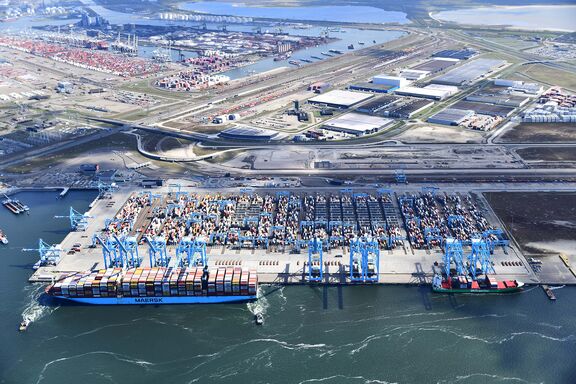Shore power for sea-going vessels at APMT MVII from 2028: CO2 reduction of almost 7,000 tonnes annually
Reading time: 3 minutes
APM Terminals Maasvlakte II (APMT MVII) will equip its terminal with shore power from 2028. This is a significant step in making the port of Rotterdam sustainable. For this purpose, the company has signed an agreement with Rotterdam Shore Power comprising a partnership between the Port of Rotterdam Authority and Eneco. This means that from 2028, sea-going vessels will be supplied with clean energy while staying in the port.

Connecting the vessels to the power grid at APMT MVII, will reduce CO2 emissions by almost 7,000 tonnes each year. It will also reduce nitrogen and particulate emissions. Vessels will use a total of about 13,000 MWh at the terminal annually.
Years of preparation and partnership preceded signing of the agreement with Rotterdam Shore Power. Together, Rotterdam Shore Power and APMT MVII are defining the further development and implementation of shore power facilities at the terminal. We expect the first vessels to be able to use the shore power facilities in 2028. That is well in advance of the European regulations requiring shore power for container ships by 2030.
Joint ambition
The construction of shore power facilities fits within APMT MVII’s objectives of becoming the most sustainable and efficient gateway to Europe. ‘Offering shore power to our clients is the next logistical step in our global ambition to minimise emissions in the maritime sector,’ states Harold Kunst, CEO of APMT MVII. ‘This collaboration with Rotterdam Shore Power is a significant step in our joint ambition to make the port of Rotterdam a global pioneer in the field of sustainability.’
Rotterdam Shore Power agrees with that message. ‘With this collaboration, we are adding a third deepsea terminal to our shore power portfolio,’ directors Ina Barge and Tiemo Arkesteijn inform us. ‘This is a significant step in making the port of Rotterdam sustainable and reducing emissions.’

Effective way to reduce shipping emissions
‘Shore power is an effective way to reduce shipping emissions and also ensures that ships at the quay do not make noise,’ says Brigit Gijsbers, Deputy Director-General for Aviation and Maritime Affairs at the Ministry of Infrastructure and Water Management. ‘It is great to see that the Port of Rotterdam is once again taking a significant step towards making the port more sustainable.’
APMT MVII is already a CO2 emission-free terminal, with buildings and areas that are energy efficient and environmentally friendly. Most of the equipment used there contributes to its sustainable character, including fully electric Lift Automated Guided Vehicles (L-AGVs). These vehicles, which transport containers, run on green energy generated by wind power and ensure minimum noise pollution.